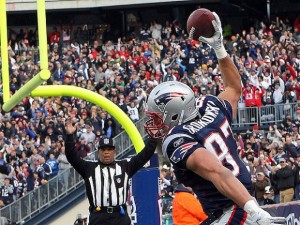Writing is a tough business. That is especially true for sports writers, and sad news emerged yesterday: after four years, Grantland decided to suspend publication, effective immediately. There are a lot of great writers at Grantland, and the site’s lead football writer, Bill Barnwell, was one of the biggest supporters and promoters of this site. Bill was always willing and eager to link to Football Perspective from his larger platform, and that helped grow the readership of this site tremendously. I’ll always be grateful to him for the respect and admiration he showed for FP.
On a larger level, it’s frustrating and disappointing to see so many good writers unemployed: I wish all of them the best in their future endeavors. Another casualty is the Grantland NFL Podcast, hosted by Barnwell and Robert Mays. You can follow then on twitter at @BillBarnwell and @RobertMays, respectively, and I recommend that you do so you can follow them wherever they wind up. Their podcast made the NFL season simply more fun to follow, and hopefully we get to hear it again one day.
In one of their last podcasts, Mays noted that Jarvis Landry ran the 40-yard dash in 4.77 seconds, an incredibly slow time for one of the game’s most explosive young players. Mays made the comment that 5’11 wide receivers who run the 40 in 4.77 seconds aren’t supposed to do the things that Landry has done, and well, I agree.
In March 2014, I looked at the 40-yard dash times of all players since 1999, courtesy of the good folks at NFLSavant.com. I then took that database, and measured it against all wide receivers since 1999 who have averaged at least 50 career receiving yards per game (Landry is at 53 yards per game).
There are 51 wide receivers who entered the NFL since 1999, have averaged at least 50 receiving yards per game, and ran the 40-yard dash at the combine. In the graph below, I’ve plotted the height (on the X-Axis) and 40-yard dash time (on the Y-Axis, in reverse order, so the fastest and biggest receivers should be on the top right) of each of those wide receivers. As you can see, Landry is indeed an outlier, as Mays suggested: [continue reading…]






